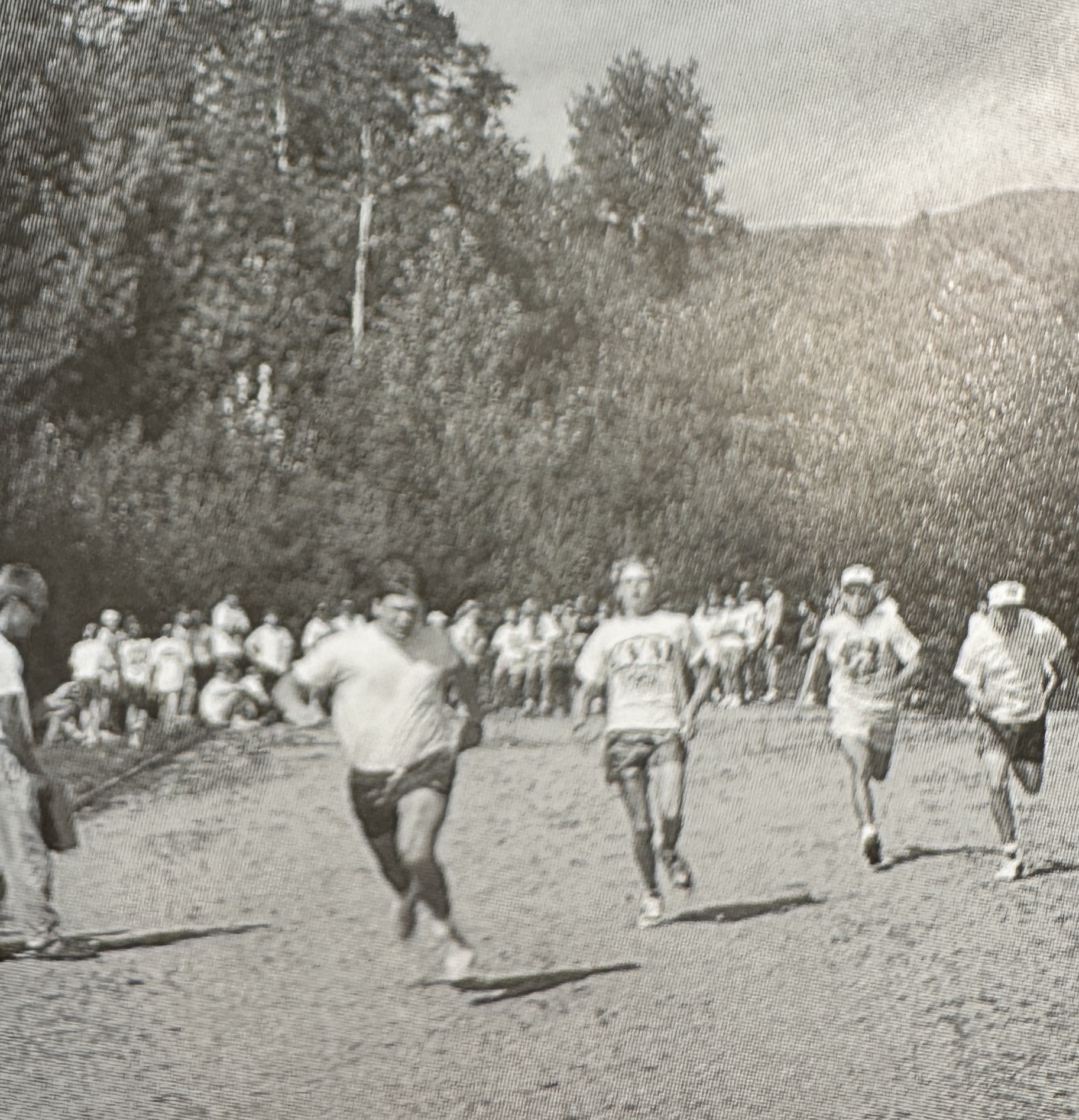AN ALL-OUT EFFORT FOR PHYSICAL TESTING – FACT 9 of 50
In the late 70’s and early 80’s physical testing had no technology to rely on. It was basic measurements of raw strength and endurance – exercises like sit-ups, pull-ups, push-ups, lateral jumps, timed held tucks and the infamous 2-mile run. Athletes trained all summer with these tests in mind and the competition was fierce. Former coach Kirk Dwyer oversaw testing and he (and most of the coaches) were as fit, or more fit than any of the kids with whom they tested.
The run was brutal. The standard for boys was 12 minutes and it became even harder when Kirk moved it from the flats to an almost pure uphill on Number 9 road to the Putnam’s house. Over the years, the run was completed on a two-mile stretch on North Road in Moretown and a 1.5 mile on the Harwood track. Some were given the option to sprint the App Gap.
Sit-up and pull-up numbers were a total point of pride, but it could get out of hand. Once kids started going into the multiple hundreds of situps, Kirk would remind folks that the standard was measured by how many you can do in one minute. But, pull-ups were a daily test, as most evenings the kids converged on the pull-up bar in Kirk’s apartment in Poundcake seeking to best the previous day’s tally.
In the early days, Kevin “Kaz” Zanella ‘79 was the King of the Tuck Test. In the words of Jamie Preston ‘80, “We all started in our tucks and held them until you ‘timed out’ – the standard was around three minutes, but many went well beyond that. Kaz’s strength was unlike any other. He would hold his tuck until the rest of the school had dropped out, he would then smile, stand up and walk away as if nothing had happened.”
Despite the competition, the community support was incredible. One year we did a timed hike/run up Mount Ellen. Mark “Spider” King was our aerobic machine and easily won the day, but he (and each successive finisher) yelled encouragement at the top of their lungs until the later finishers were met with a Gauntlet of athletes, willing them faster to the top. First or last, the community embraced you if you worked hard – no pressure plates or beep tests needed!
Today’s athletes participate in a similar, yet standardized, series of physical tests drafted by U.S. Ski and Snowboard titled SkillsQuest, and while the tests have evolved over the years, the same all-out effort to dig deep and leave nothing behind while supporting those around you remains the same.

